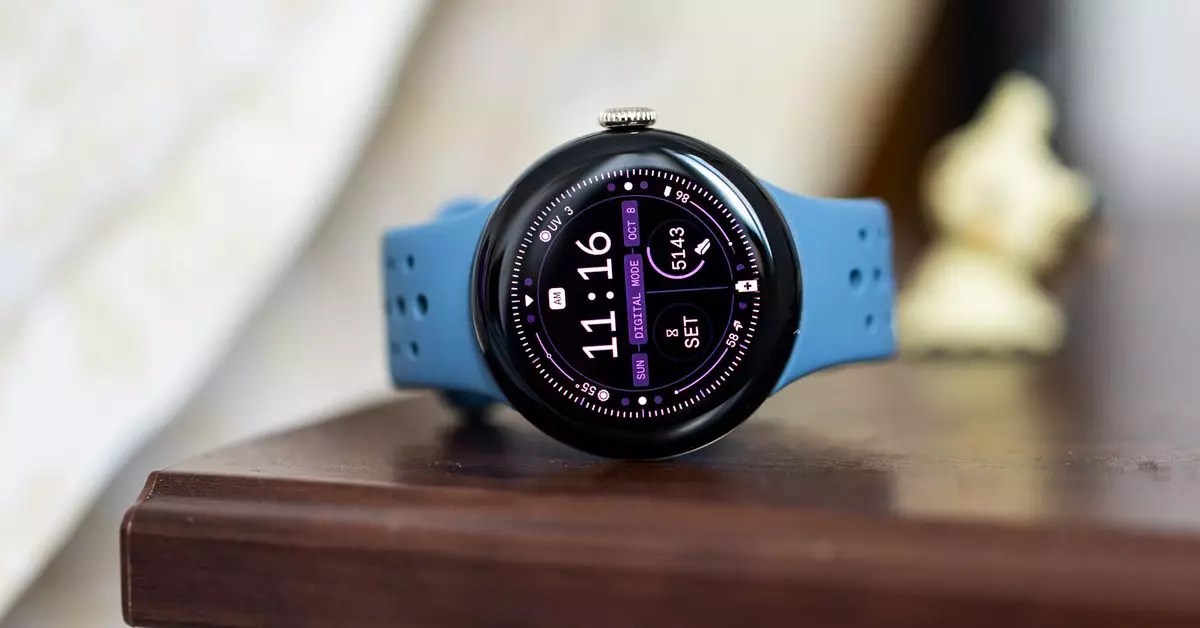When discussing personal technology, particularly wearables, it’s easy to get swept away by the allure of the latest models and their flashy features. However, in the case of Google’s recent update to its smartwatch line with the Pixel Watch 3, it’s critical to pause and consider whether previous iterations, such as the Pixel Watch 2, still hold merit. Priced competitively at around $224—a $26 discount from its original price—the Pixel Watch 2 remains a robust choice for consumers who don’t necessarily need the latest upgrades.
The Pixel Watch 3 comes equipped with several promising enhancements that may compel buyers to opt for this model over its predecessor. Among its most notable features is a larger and more vibrant display, set in a new 44mm case, allowing for improved visibility. Additionally, features like AI-generated workout suggestions and the capability to use Google Maps offline herald significant advancements in smart technology and user convenience.
However, while these upgrades are noteworthy, it is essential to question their actual value for the average consumer. Many of the enhancements—like the improved display brightness—while impressive, can be somewhat subjective in their impact. For those entrenched in health tracking and workout engagement, the significant addition of workout suggestions could enhance the user’s fitness journey; however, for others less concerned about such features, they may be perceived as unnecessary.
The Pixel Watch 2: Value and Usability
The Pixel Watch 2, despite being a generation behind, retains a strong aesthetic appeal and functionality that cannot be overlooked. With a 41mm size, its display area differs slightly from that of the Watch 3, measuring approximately 10% smaller. But in practical use, these dimensions do not jeopardize the overall experience. Both iterations run on the Qualcomm Snapdragon Wear W5 Gen 1 chip, leading to similar performance benchmarks in day-to-day use.
One of the significant advantages of the Pixel Watch 2 is its affordability, especially as price drops create more accessibility for potential buyers. As the market for smartwatches continues to grow, having a competent device—like the Pixel Watch 2—available at a lower price point allows users to enter the space without breaking the bank.
Another critical consideration in assessing the Pixel Watch 2 is its battery life. Both watches claim to provide an average of 24 hours per charge, enough for regular use without the anxiety of constantly needing to recharge. Even with the always-on display feature enabled, users can largely count on the Pixel Watch 2 to offer reliable performance throughout the day. Such performance is often a determining factor when choosing a wearable, and the Watch 2’s reassuring battery reliability can make it an appealing choice for users who lead active lifestyles.
Feature Comparison and Decision-Making
While the Pixel Watch 3 introduces newer features such as an ultra wideband chip—allowing for interactions with other devices and cars—the Pixel Watch 2 still maintains Wear OS 5 compatibility and several health and safety features, which are often adequate for most users. The evolution of software updates allows past models to receive continuous improvements, meaning that features once exclusive to newer models can trickle down, further diminishing the gap between the two watches.
When comparing cost to benefit, the question arises: are the additional features of the Pixel Watch 3 truly worth the steep price tag? For consumers who prioritize flagship specifications and the latest technological offerings, the answer may be yes. However, for budget-conscious buyers who desire solid performance without unnecessary frills, the Pixel Watch 2 is an attractive option that continues to hold its ground.
Technology moves at an incredibly fast pace, and each new release carries a myriad of attractive advancements. However, as the Pixel Watch 3 sets new standards for Google’s smartwatch lineup, the Pixel Watch 2 firmly holds its place as a viable contender. With its competitive pricing, reliable performance, and essential features, it caters to a broad range of needs. Prospective buyers should evaluate their personal requirements carefully before choosing which smartwatch suits them best, as the right choice could ultimately hinge on balancing modern features with sensible pricing.


Leave a Reply